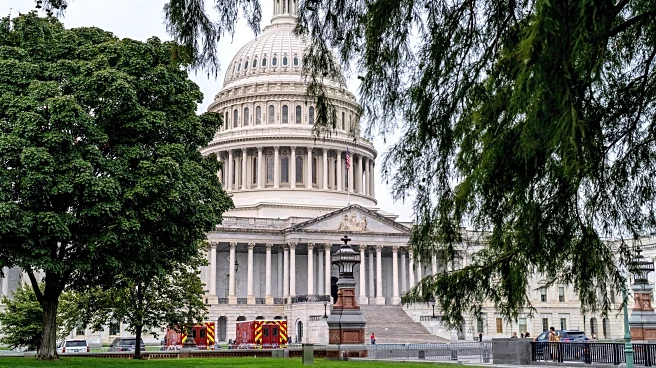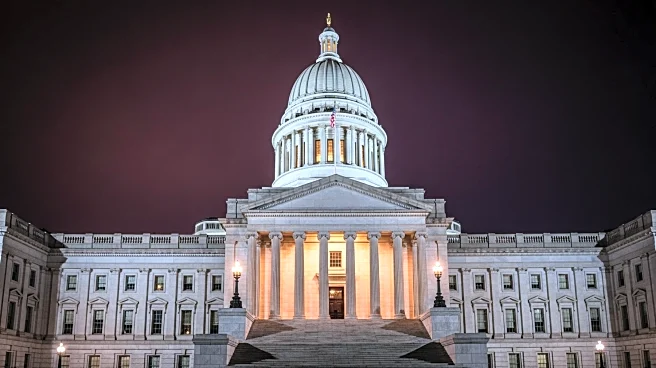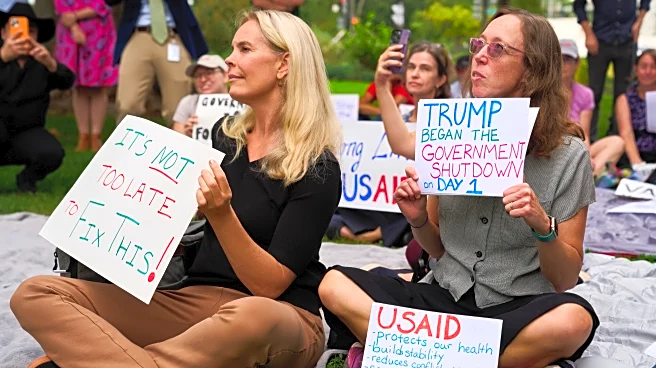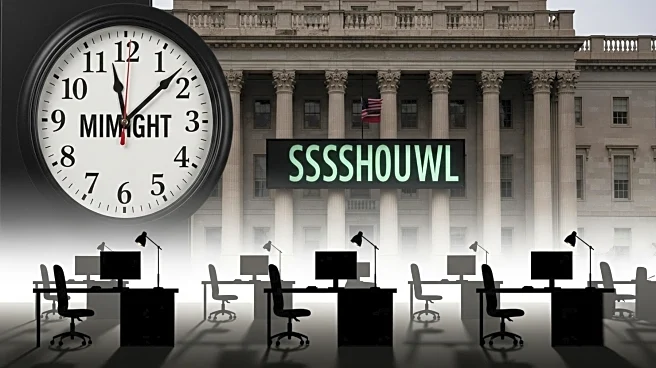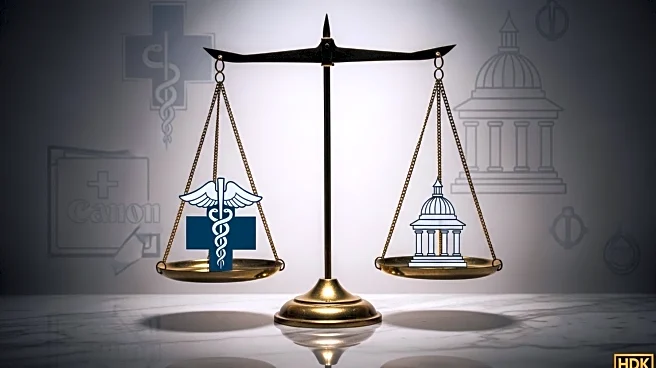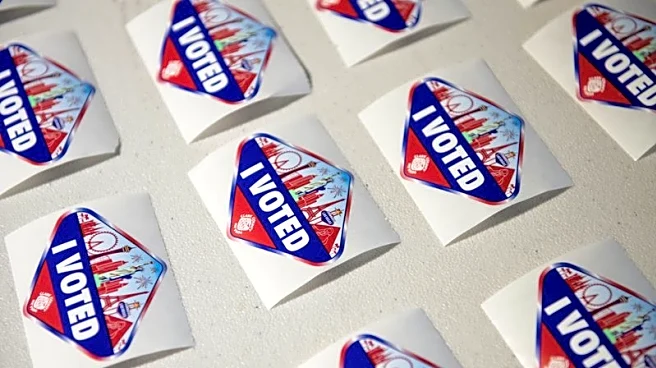What's Happening?
The U.S. government is on the brink of a shutdown as Congress struggles to reach a consensus on a short-term funding measure. The deadline for avoiding the shutdown is midnight on Wednesday, with Republicans proposing a temporary funding extension until November 21. However, Democrats are demanding that the measure address healthcare concerns, specifically reversing Medicaid cuts and extending tax credits for Affordable Care Act insurance premiums. The lack of agreement has left the House without scheduled votes, increasing the likelihood of a shutdown. During a shutdown, non-essential federal employees are furloughed, while essential services like FBI investigations, air traffic control, and military operations continue. Social Security and Medicare services remain operational, but new drug applications and other FDA activities may be delayed.
Why It's Important?
A government shutdown could have significant implications for federal employees and public services. Approximately 340,000 federal workers were furloughed during the last major shutdown, and similar numbers could be affected this time. While furloughed workers are guaranteed retroactive pay, the immediate financial strain could impact many families. Essential services will continue, but the disruption could affect public health, education, and national parks. The economic impact of a short shutdown is typically minimal, but prolonged closures can create uncertainty about government roles and financial impacts on funded programs. Markets have historically shown resilience, but the broader economic effects depend on the shutdown's duration.
What's Next?
If the shutdown occurs, federal agencies will implement contingency plans, determining which employees are essential and which services will be maintained. The White House's Office of Management and Budget has suggested potential mass layoffs for unfunded programs, a more aggressive stance than previous shutdowns. The resolution of the shutdown will depend on negotiations between Congress and the administration, with potential impacts on future budget discussions and public confidence in government operations.
Beyond the Headlines
The shutdown highlights ongoing political divisions and the challenges of balancing fiscal responsibility with public service needs. It raises questions about the prioritization of government functions and the long-term implications for federal workforce stability. The situation underscores the importance of bipartisan cooperation in addressing critical national issues.

